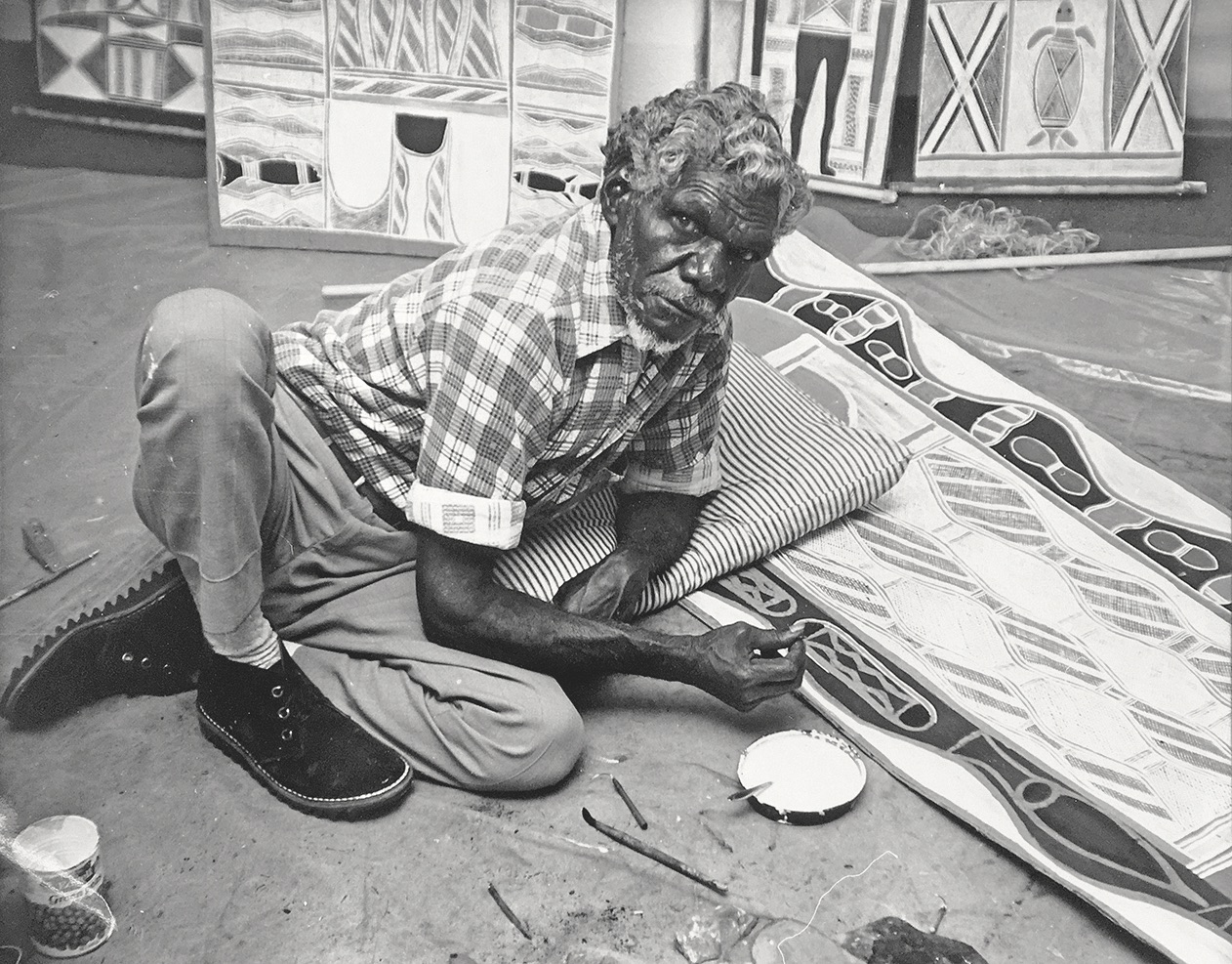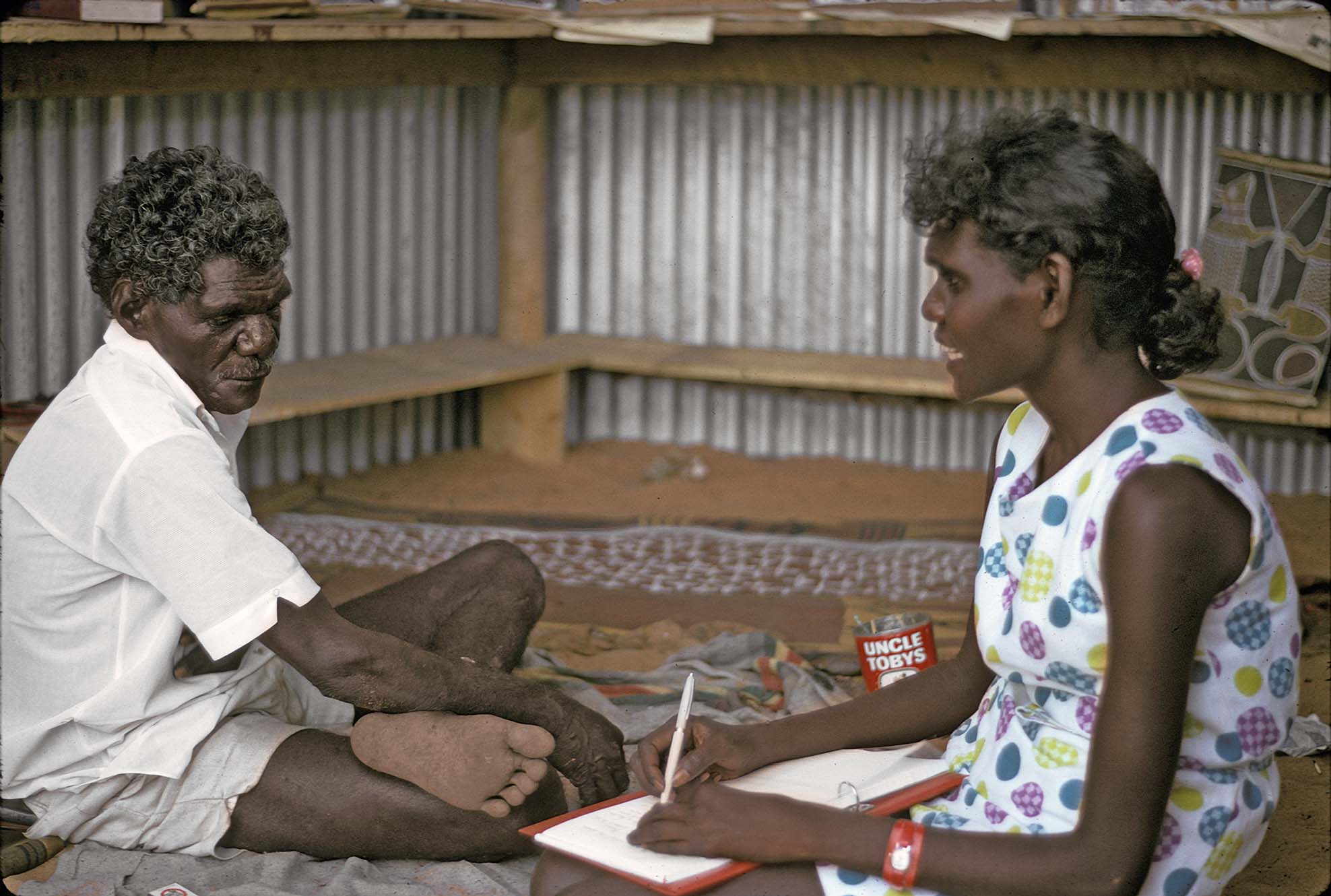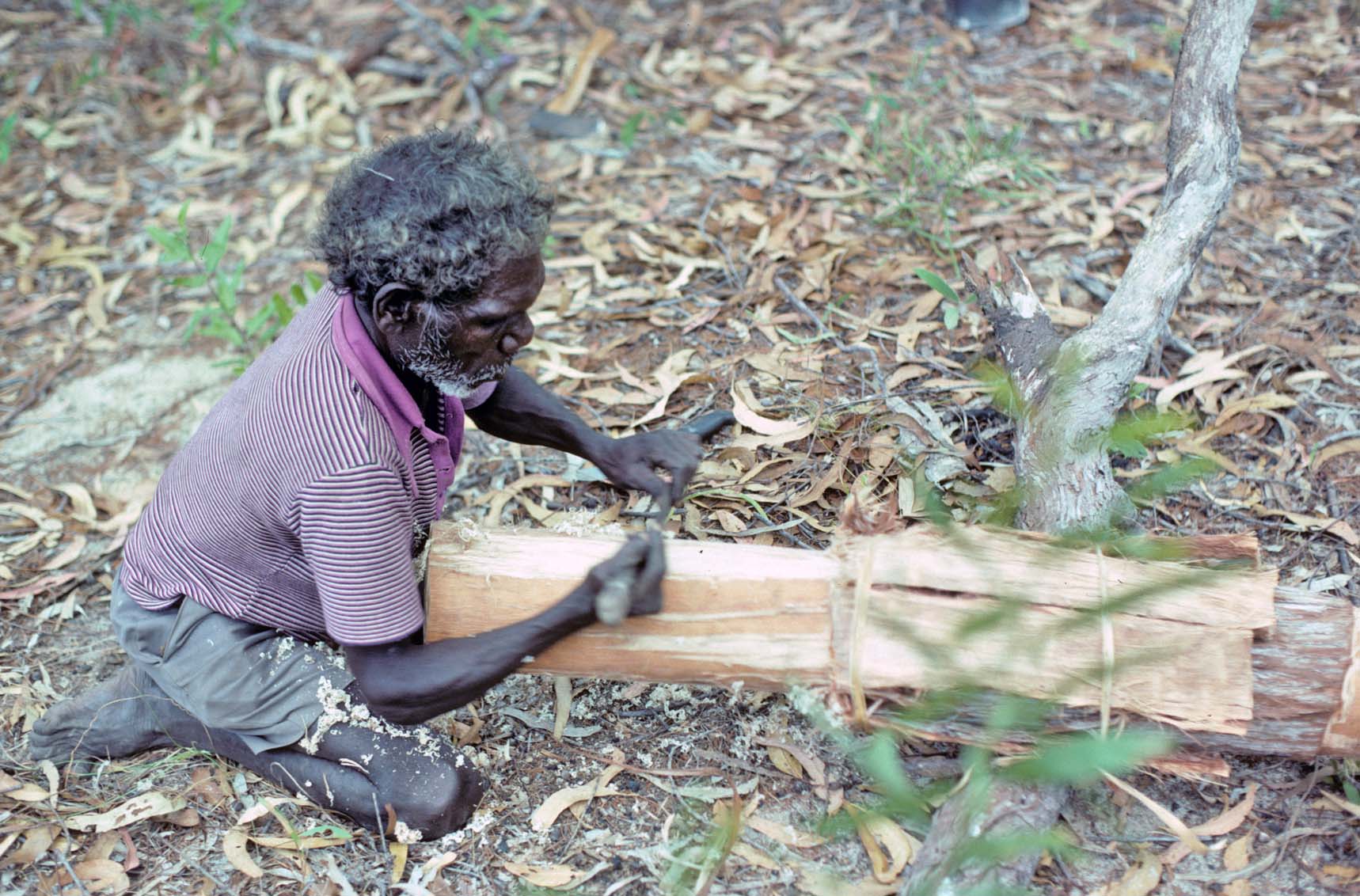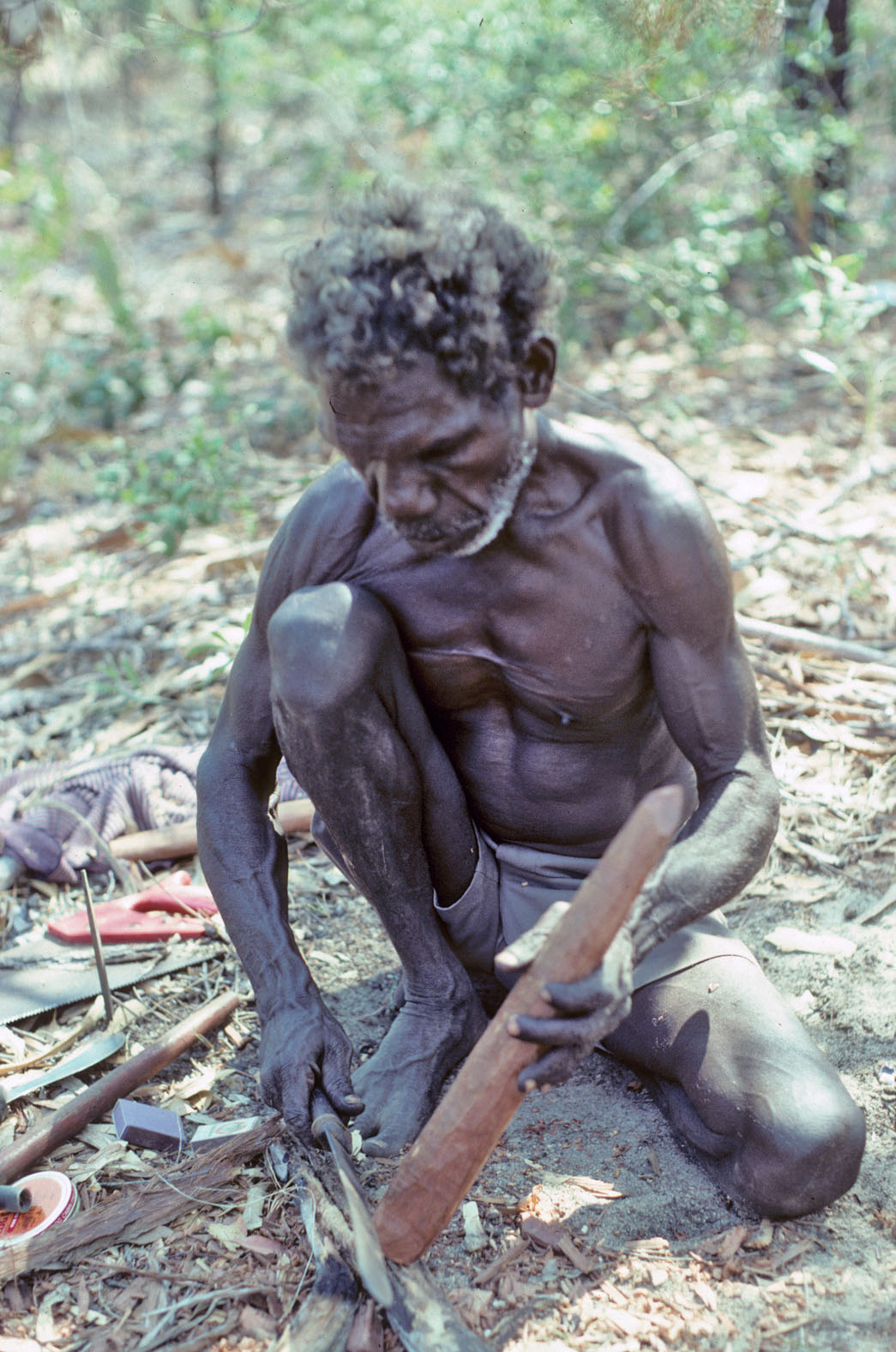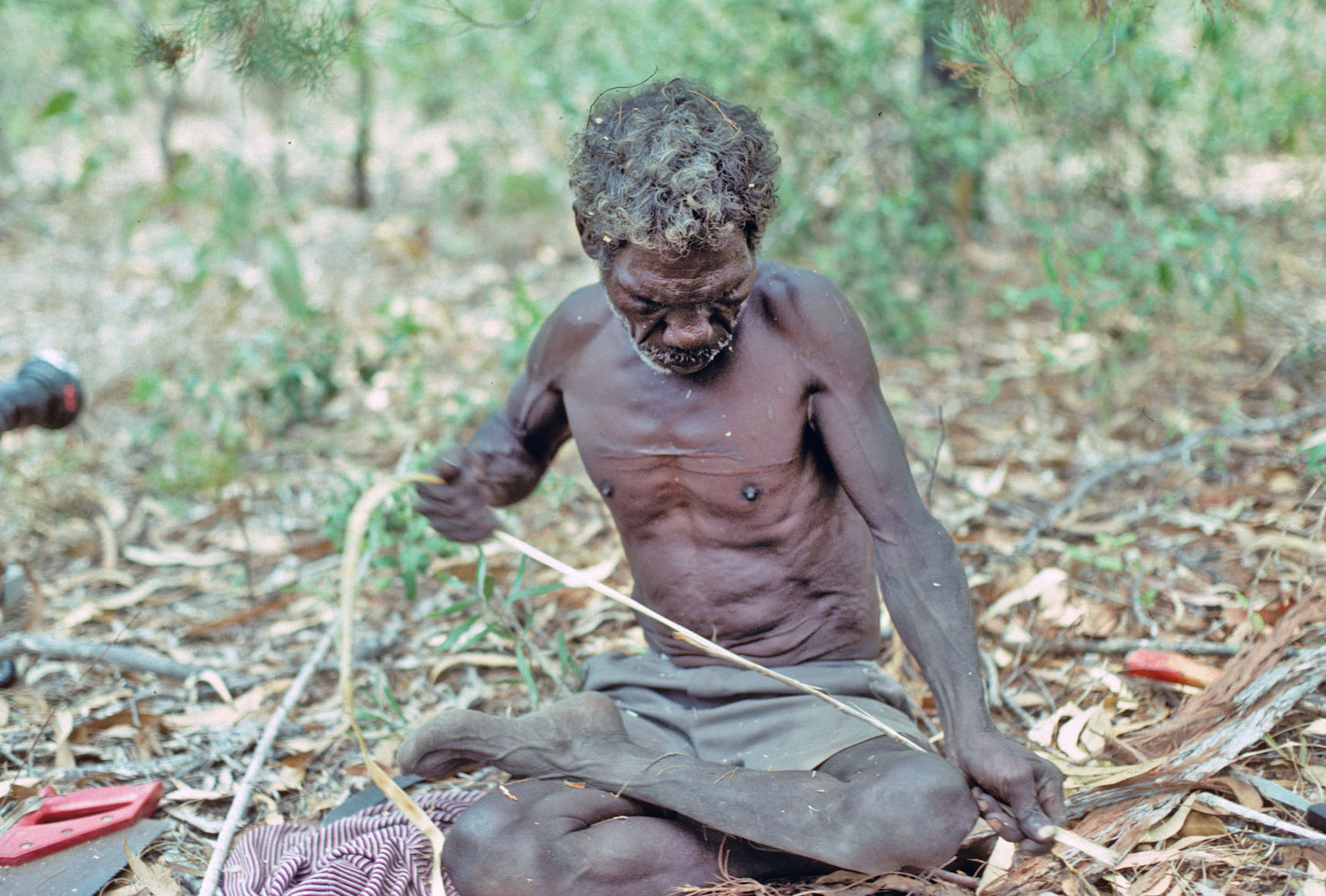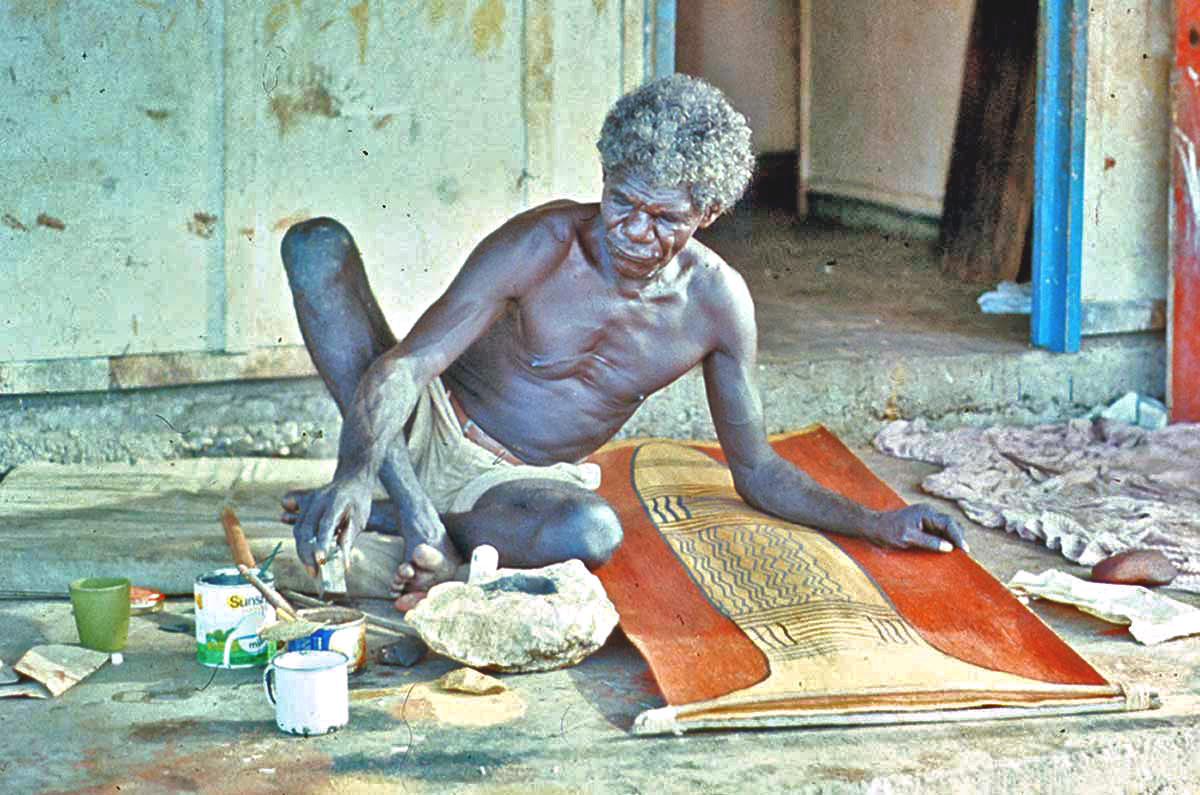
"Yolŋu paintings sometimes include miny’tji from more than one estate. The bottom half of Narritjin Maymuru’s Djomula Raŋga (Marrŋu Burrkun Dhäwu) | The Marawili Tree Raŋga (The Possum String Story) (1968) is centered on Wayawupuy. The main figurative image is Ŋuykal. In ancestral times, a Waŋarr being in human form, Ŋulumun, traveled inland to the place where the rock stood in the riverbed. His body transformed from human hunter to kingfish. In dances, this metamorphosis is captured by the performers holding a spear thrower behind them, flicking it from side to side as if it were the fish’s tail. Yolŋu believe the small fish that cluster around the Dhukururru at Wayawupuy are kingfish fingerlings that journey to the saltwater through a tunnel beneath the intervening Dhuḏi-Djapu’ estate of Dhuruputjpi. Beneath the Ŋuykal, we can see the Dhukururru."
– HOWARD MORPHY
More Info
Narritjin Maymuru devoted his adult life to promoting the significance of Yolŋu culture to Europeans through his own art and by encouraging his contemporaries to collaborate on major public works of cultural, social, and political significance. An instigator of the Yirrkala Church Panels and the Bark Petitions, Maymuru was one of the first Yolŋu to consider himself a professional artist in the public domain. He produced paintings of extraordinary complexity by incorporating a wealth of iconography, layers of interpretation, and visual puns in the best tradition of Yolŋu art.
Ostensibly, this painting represents the site of Djarrakpi organized along a template of rectangles. It depicts Guwak, the ancestral Koel Cuckoo of the Maŋgalili, sitting atop the sacred Marawili cashew tree, located at the head of the lake at Djarrakpi on Cape Shield. The St. Andrew’s Cross spiders—whose
X-shaped web is a model for the string ceremonial breast girdles worn by Yolŋu women—flanking the
tree hint at the presence of female ancestors called the Nyapililŋu, who transform lengths of string
spun from possum fur into sand dunes.
On another level, the painting expresses the relationship between two Maŋgalili sacred sites: Djarrakpi
and the Wayawu River, home of Ŋyukal the Kingfish, which is shown here decorated in a design
representing yoku, the bulbs of an edible freshwater plant that grows in the river. Finally, because Guwak
died at Djarrakpi, the Marawili tree is also regarded as a force connecting the living and the dead: cicadas
and possums run up and down the trunk as messengers from one world to the other.
From Ancestral Modern: Australian Aboriginal Art. Seattle: Seattle Art Museum, 2012.
– Wally Caruana
Additional Information
Decade
1968
Medium
Natural pigments on eucalyptus bark
Dimensions (IN)
78 3/4 x 22 7/8
Dimensions (CM)
200 x 58
Credit
Collection of Robert Kaplan and Margaret Levi
Narrative
Maŋgalili
The Maŋgalili clan belongs to the Yirritja moiety. Their major spiritual theme revolves around the...
Songline
Yiŋapuŋapu
The yiŋapuŋapu is a low relief sand sculpture, elliptical in shape, that is used in...
Location
1960s
The 1960s were a decade of tumult and triumph for Yolŋu art and artists. In...
About The Artist(s)
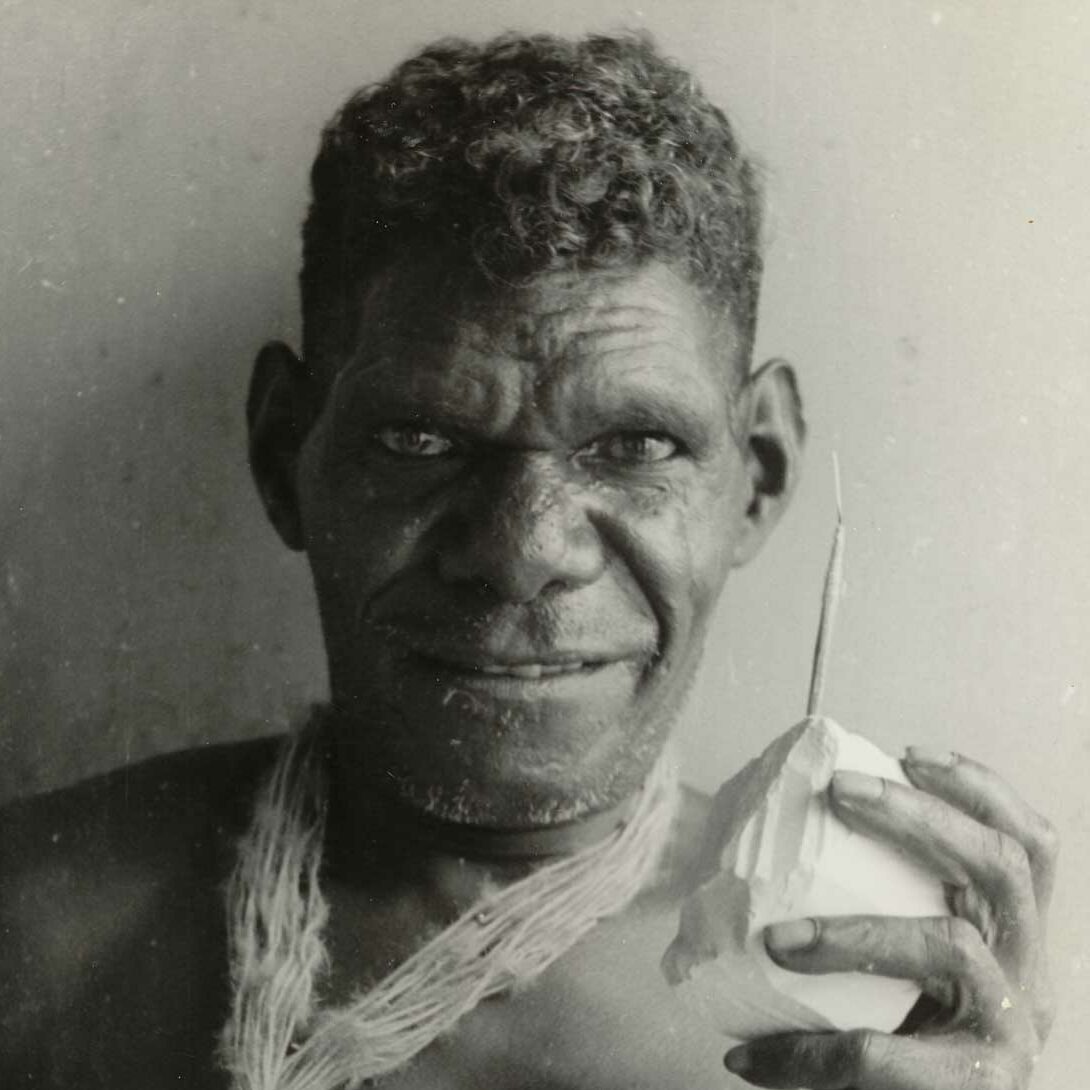
Clan
Maŋgalili
Artist Dates
c.1916-1981
Alternative Names
Naridjin, Naritjin, Narridjin, Ngaradjin
Narritjin Maymuru
Narritjin Maymuru was one of the most significant figures in the development of the painting movement at Yirrkala. The driving force behind the Yirrkala Church Panels, he actively encouraged art making as a means of economic development, which would lead to the foundation of the Yirrkala Art Center in 1976. Along with Mawalan Marika, Narritjin was one of the first men to teach his daughters to paint. In 1978, he was awarded a Creative Arts Fellowship from the Australian National University.
Collections Represented
Art Gallery of New South Wales
Art Gallery of Western Australia
Art Gallery of South Australia
Kluge-Ruhe Aboriginal Art Collection of the University of Virginia


